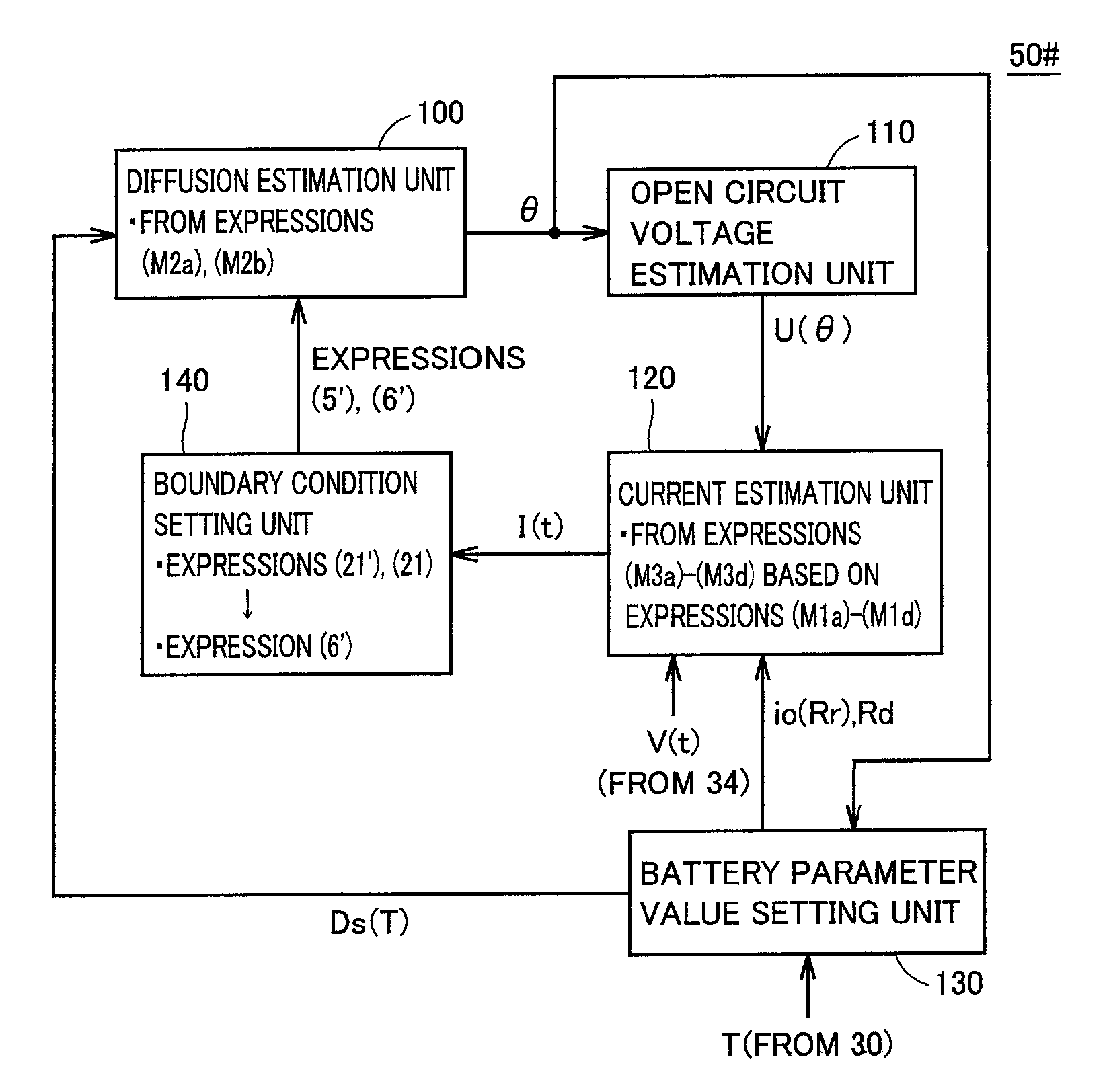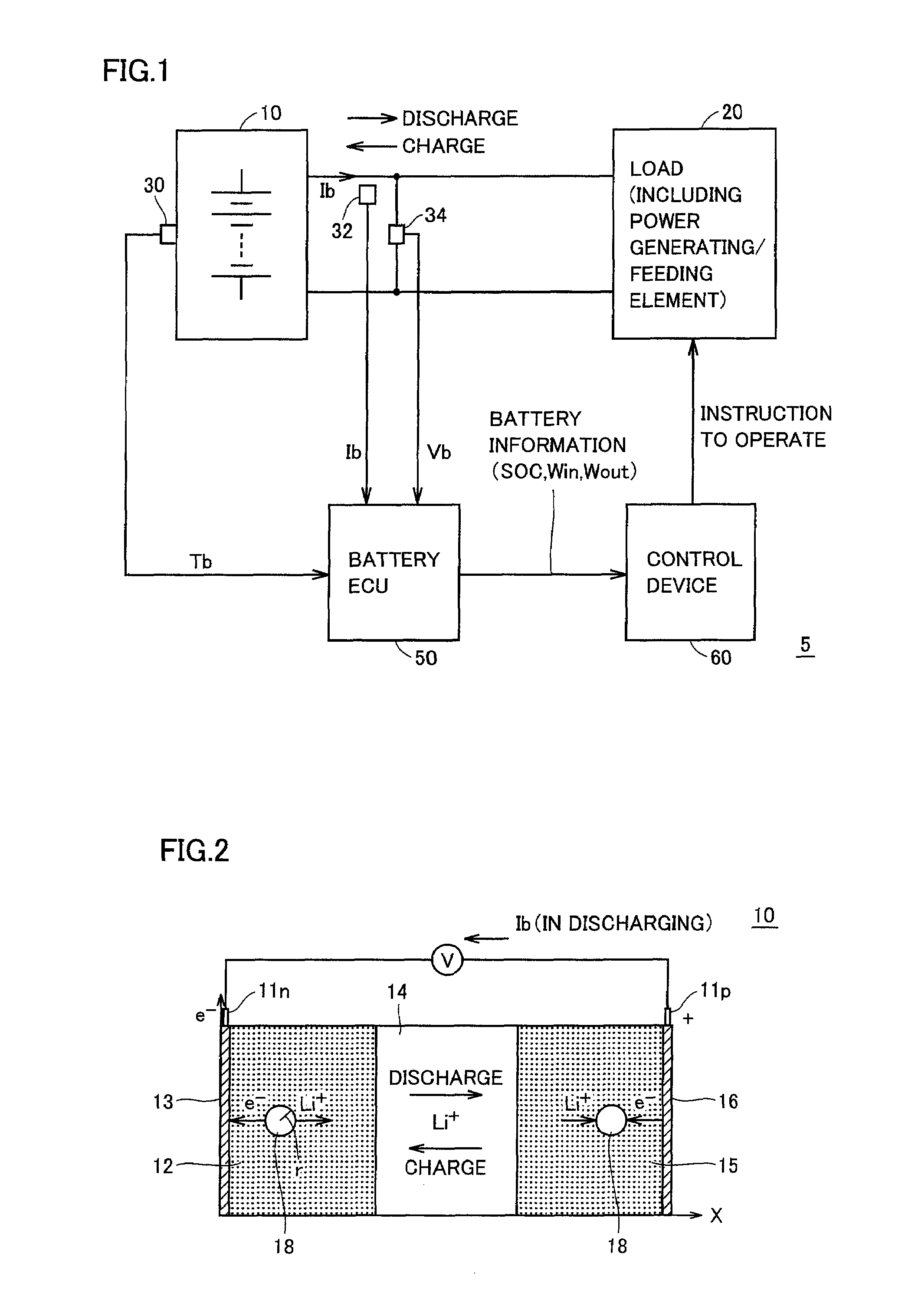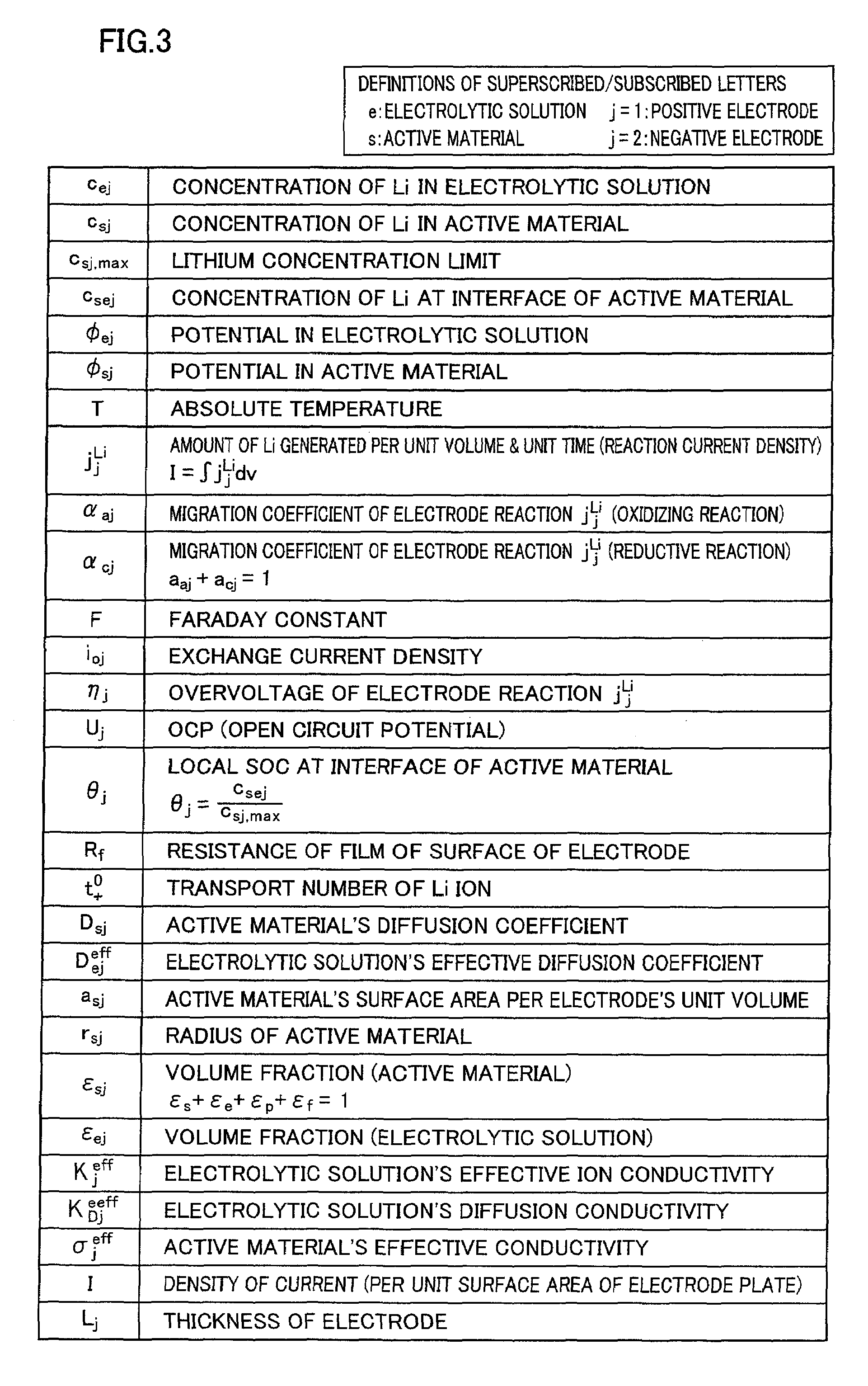Device estimating a state of a secondary battery
a secondary battery and state estimation technology, applied in secondary cell servicing/maintenance, instruments, electrochemical generators, etc., can solve the problems of reducing the life of the battery, reducing the accuracy of the state estimation, and reducing the efficiency of the battery, so as to achieve the effect of reducing the operating load
- Summary
- Abstract
- Description
- Claims
- Application Information
AI Technical Summary
Benefits of technology
Problems solved by technology
Method used
Image
Examples
first embodiment
[0063]FIG. 1 is a block diagram schematically illustrating an exemplary configuration of a power supply system having applied thereto a device estimating a state of a secondary battery according to an embodiment of the present invention.
[0064]With reference to FIG. 1, a power supply system 5 is configured of a secondary battery 10, a load 20, and a battery ECU 50 and a control device 60 configured of an electronic control unit (ECU). Each ECU is representatively configured of a microcomputer and a memory (random access memory (RAM), read only memory (ROM), or the like) for performing a previously programmed predetermined sequence and predetermined operation.
[0065]Chargeable and dischargeable secondary battery 10 is representatively implemented as a lithium ion battery, which is suitable for application to the present invention as the battery has an output characteristic varying with how a reactant material (lithium) is distributed in the battery, in an active material of an electrod...
second embodiment
[0163]In a second embodiment will be described another method of estimating an SOC based on a result of estimating an internal state of a secondary battery according to the first embodiment.
[0164]FIG. 14 is a block diagram for illustrating how a device estimating a state of a secondary battery estimates an SOC according to the second embodiment.
[0165]With reference to FIG. 14, the device estimating a state of a secondary battery according to the second embodiment includes an offset estimation unit 170, a current accumulation unit 180, and an SOC estimation unit 210.
[0166]Offset estimation unit 170 calculates an offset error Iof of current sensor 32 in accordance with an expression (31), indicated below, as based on the battery's current density I(t) estimated by current estimation unit 120 and the battery's current Ib(t) measured by current sensor 32. In expression (31), a model battery current Im(t) is obtained by multiplying the battery's current density I(t) estimated by current ...
third embodiment
[0192]The battery model expressions described in the first and second embodiments are derived on the assumption that a battery's entire current flows through an active material and contributes to an electrochemical reaction. In reality, however, for example for low temperatures in particular, an effect of an electric double layer capacitor that is caused at an interface of the electrolytic solution and the active material manifests and the battery's entire current is split into an electrochemical reaction current contributing to an electrochemical reaction and a current flowing through the capacitor.
[0193]FIG. 20 is a circuit diagram schematically showing a secondary battery's equivalent circuit model with such an electric double layer capacitor considered.
[0194]With reference to FIG. 20, the battery's current density I(t) corresponds to the battery's entire current component, which is split into an electrochemical reaction current component (a current density IEC(t)) flowing throug...
PUM
| Property | Measurement | Unit |
|---|---|---|
| electrochemical reaction | aaaaa | aaaaa |
| voltage | aaaaa | aaaaa |
| concentration | aaaaa | aaaaa |
Abstract
Description
Claims
Application Information
 Login to View More
Login to View More - R&D
- Intellectual Property
- Life Sciences
- Materials
- Tech Scout
- Unparalleled Data Quality
- Higher Quality Content
- 60% Fewer Hallucinations
Browse by: Latest US Patents, China's latest patents, Technical Efficacy Thesaurus, Application Domain, Technology Topic, Popular Technical Reports.
© 2025 PatSnap. All rights reserved.Legal|Privacy policy|Modern Slavery Act Transparency Statement|Sitemap|About US| Contact US: help@patsnap.com



